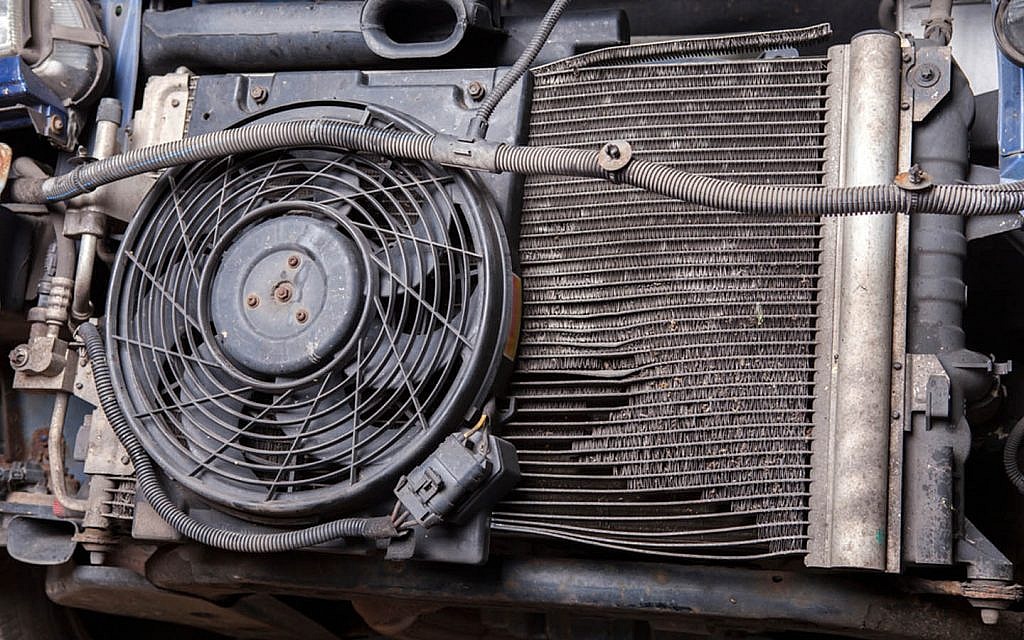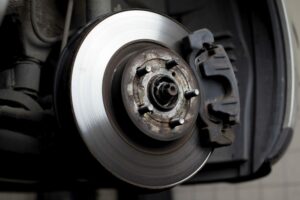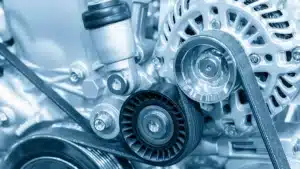7 Causes of Radiator Leakage

Figure of Radiator Leakage
Radiator Leakage: Visit the region where there are no radiators. With its tens of thousands of mini-explosions per hour, an internal combustion engine car could melt metal and stop all operations in its tracks. Within a few hundred kilometers of driving, the engine would stall. This is why figuring out the cause of your radiator’s leak and how to fix it is crucial.
How Radiators Work
Early automotive engineers create a cooling system to increase the engine’s lifespan. In essence, a solution of water and antifreeze push through a network of tubes all around the engine to soak up any extra heat before returning to the radiator where it can evaporate when exposed to air. While the car is moving, the cycle is continuously performed to keep the engine cool enough to function. The coolant level drops when the radiator (or any other component of the cooling system) is leaking fluid, which affects how well the engine can cool.
Typically, coolant circulates in a closed system around the engine, through the hoses, and into the radiator. Nothing enters the system and nothing leaves, similar to how blood circulates through your body’s arteries and veins before returning to your heart. An injury to the body that bleeds leaves an open system that can be infected by outside objects. Similar issues might arise from air or debris entering the cooling system due to a break in the system.
The Cause of Your Radiator Leakage
Why does Radiator Leakage happen? These are the primary offenders:
- The radiator has corrosion
The constant pressure and heat stress that the radiator experiences as it ages causes it to wear down and degrade. As rust, corrosion, and microscopic cracks start to appear, air and silt can enter and enlarge the holes already there. Over time, the holes enlarge to the point where fluid can exit. A new radiator for a car can cost between $600-$900; for a truck. The price may be a few hundred dollars higher. Of that, the radiator itself costs roughly $100.
The radiator gasket’s wear
The gasket that connects the tank holding the coolant to the radiator might deteriorate with use. Creating a poor seal that permits fluid to leak. The outcome is identical coolant leaves the system and makes the remaining coolant work harder. If you can’t replace the gasket, spend $25 on a bottle of BlueDevil Radiator and Block Sealer. Radiator gasket leaks are permanently fixed by a simple formula. Start the engine and run the heater at full power after allowing the engine to cool. Pour the block and radiator sealer into the radiator gradually. To circulate the sealant. Replace the cap and let the car idle for 45 minutes.
The radiator hoses’ wear
Extreme temperatures and other environmental factors gradually wear down and weaken and brittle the tubes that transport coolant to and from the radiator. The radiator, water pump, and heater core connections amongst these hoses are all very prone to wear and are frequently the main location of the leak. At a gas station. Replacing a single hose costs roughly $150. With labor makes up half of the cost.
There is a leak in the radiator cap
Though it is far less frequent than the three above, this is the one you should hope for. The engine should always be allowed to cool down before removing the radiator cap since radiator caps function under intense pressure and heat. Even so, you should still cover your hand with a rag to prevent any steam from being discharged.
The radiator cap must always maintain a tight seal; otherwise. Coolant that has heat to a gaseous state may leak out from beneath the cap. If the breach is wide enough, coolant in liquid form can escape.
The water pump is not working
The coolant force is via the pipes from the radiator to the engine by the water pump. Without the pump, The fluid that cools the engine and releases heat through the radiator will not circulate. The water pump connects to the radiator’s lower pipe and hangs down close to the ground while being powered by a belt. It may develop a hole that leaks coolant if the hose connection becomes loose, the pump corrodes, or it is struck by road debris. The water pump is frequently to blame if you notice a leak coming from the bottom of the radiator.
A crack exists in the coolant reservoir tank.
Wear and tear can also occur to the plastic tank that distributes the coolant to the radiator through hoses. Any of these places the container, its top, or the point where the hoses connect can develop a crack and start to leak. At a service station, the tank costs $150–200; labor costs an hour, and the final cost is $250–300.
A blown head gasket
The worst-case scenario is that the head gasket, which separates the cylinder head from the engine block, corrodes or splits, causing gas, coolant, and oil to wind up in the same location. The head gasket is constantly battered by the different fluids indicated above, as well as intense heat and pressure. The engine is in immediate danger of failing when the head gasket ruptures.
In addition to other issues, the engine might overheat as coolant penetrates into the engine and becomes less and less effective at doing its job. A blown head gasket requires extensive engine disassembly in order to repair, which adds time and expense. A replacement head gasket typically runs more than $1,000.
Methods to Prevent Radiator Leaks
Regular cooling system maintenance and inspection can easily prevent these issues. Every 100,000 miles or so. The coolant should flush out and be replaced since old coolant can become corrosive and corrode the metal in the radiator. See here for our coolant flushing instructions. Before any problems arise. Inspect the hoses and connectors for cracking and degradation, and patch any damaged gaskets using the sealant.
Many of the issues that cause a radiator to leak coolant can prevent or solve by routine maintenance, but not all of them. Every component of the cooling system eventually gives out due to the extreme pressure and temperature gradients it is subject to.
FAQ
Why does the water in my radiator keep leaking?
A small crack in the hose, a tiny hole in the radiator, or a problem with the water pump could all be the cause of the disappearing engine coolant. Additionally, a coolant leak could appear inside your car or it could just vaporize into mist thanks to your defroster.
How can I locate a radiator leak?
Examine the area around the radiator cap, the hoses running throughout the engine compartment (pay attention to the ends where they clamp to other parts), and the radiator itself for indications of coolant leakage. Which appears as a light-colored residue or stain. If a clamp appears to be leaking near it. Try using a screwdriver to tighten the clamp.
What takes place if a radiator leaks?
Your cooling system won’t function correctly if you have a radiator leak, and the engine will quickly begin to overheat. A leak or broken component is probably at blame if the temperature warning light comes on or steam is flowing from under the hood.
I have a radiator leak. Can I still drive my car?
You might be able to drive for a limited period of time with a radiator leak, depending on the source of the leakage. Your automobile will eventually overheat due to the absence of coolant. Which could lead to damage to numerous engine bay components. Therefore, it’s a good idea to pause and assess the problem as soon as you become aware of it.
Editor’s choice:
Beginning issues? How to Determine Whether It’s the Alternator or Battery







